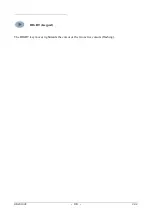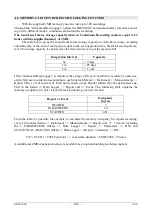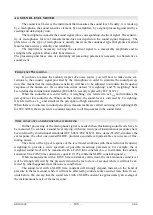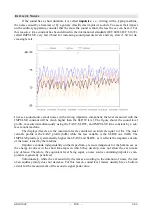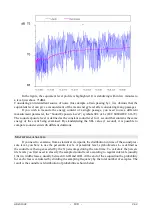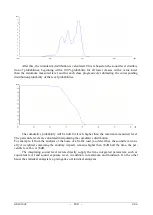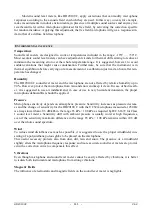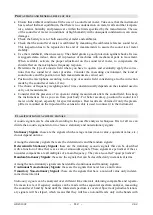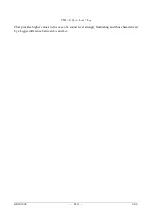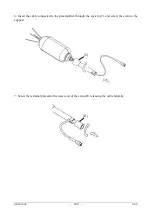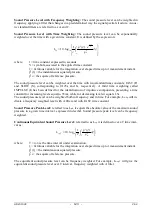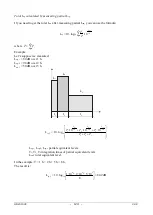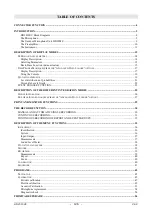
HD2010UC
- 112 -
V4.2
P
RECAUTIONS AND
G
ENERAL RULES OF USE
•
Ensure that ambient conditions fit the use of a sound level meter. Take care that the instrument
has reached thermal equilibrium, that there is no condensation on metal walls and that tempera-
ture, relative humidity and pressure are within the limits specified by the manufacturer. The use
of the sound level meter in conditions of high humidity with consequent condensation, can cause
damages.
•
Check the battery level of both sound level meter and calibrator.
•
Check that the sound level meter is calibrated by measuring the calibrator reference sound level.
This inspection has to be repeated at the end of measurements to assure the sound level meter
stability.
•
Use the windshield, when necessary. The shield grants a good protection against shocks. Its use
is suggested also indoor, above all in presence of machines with mechanical parts in movement.
When available, activate the proper adjustment on the sound level meter, to compensate the
shield effect on the microphone frequency response.
•
Determine the type of acoustic field where you have to operate and eventually apply the correc-
tions that the sound level meter provides. Consider the measuring environment, the kind of
sound source and the position in which measurements are carried out.
•
Position the microphone according to the type of acoustic field considering also the correction
made by the sound level meter, if any.
•
The choice of frequency weighting and of time constant usually depends on the standard used to
carry out measurements.
•
Consider that the presence of an operator during measurement alters the sound field: thus keep
the instrument as far as you can from your body. For better accuracy, position the sound level
meter on the tripod, especially for spectral analyses. Best results are obtained if only the pream-
plifier is mounted on the tripod and the extension cable is used to connect it to the instrument.
C
LASSIFICATION OF ACOUSTIC SIGNALS
Acoustic signals can be classified according to the possible analysis techniques. First of all we can
divide the acoustic signals into two classes: stationary and non-stationary signals.
Stationary Signals
: these are the signals which average values (mean value, equivalent value, etc.)
do not depend on time.
Among the stationary signals there are the deterministic and the random signals:
Deterministic Stationary Signals
: these are the stationary acoustic signals that can be described
with a function of time that is as a sum of sinusoidal signals. These signals are periodical if the si-
nusoidal components are all multiples of a main frequency. They are also called “quasi periodical”.
Random Stationary Signals
: these are the signals that can be described only in statistical terms.
Among the non-stationary signals can be identified continuous and transitory signals:
Continuous Non-stationary Signals
: these are the signals that never have a null value.
Transitory Non-stationary Signals
: these are the signals that have a non-null value only in deter-
mined time intervals.
Stationary signals
can be analyzed over different time intervals obtaining comparable and repeata-
ble mean levels. A frequency analysis can be made with a sequential spectrum analyzer, measuring
the sound level band by band until the interested spectrum is covered. Spectra of periodical station-
ary signals will be striped, which means that they will have non-null levels only in the bands with
Summary of Contents for DeltaOHM HD2010UC
Page 2: ...HD2010UC 2 V4 2 ...
Page 129: ...HD2010UC 129 V4 2 NOTES ...
Page 130: ...HD2010UC 130 V4 2 NOTES ...
Page 131: ......

